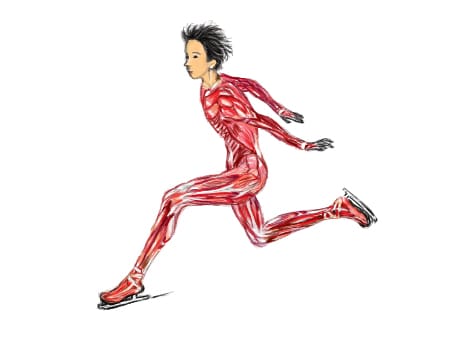For many people, the mere thought of stepping outside into freezing temperatures is enough to send them scurrying for cover beneath a mountain of blankets. For winter athletes, however, the weather presents the perfect opportunity to indulge in the sports that are only made possible by the seasonal shift in climate.
From the park to the rink, winter athletes go hard over the course of their limited season. In their pursuit of perfection, athletes squeeze every last flake from the mountain before the spring comes to melt away their fun. They push themselves further and further, flying ever closer to the sun and, as a result, accidents often occur.
According to data collected from the American Academy of Orthopaedic Surgeons (AAOS), over 246,000 individuals were injured while participating in winter sports in 2015. Skiing was the number one culprit, accounting for 88,000 of the injuries; snowboarding and ice-skating together resulted in 111,000; and sledding, snow tubing, and tobogganing injured 47,000 winter athletes.
These numbers represent what a lack of preparation leads to in the reality of all sports: people getting hurt. Many injuries are preventable, and with a few minor considerations for the sport beforehand, the chances of walking away instead of being carried away can be increased.
Many athletes find solitude a necessary and enjoyable part of any sport, but when an individual is 12,000 feet above sea level on a peak of Breckenridge Colorado’s famed Rocky Mountains, the level of risk involved in the activity can result in terrible consequences.
For this reason, risk needs to be managed more effectively by going about the sport with a partner and agreeing upon a method of communication in the case that something goes awry.
The AAOS also recommends that athletes properly warm up their muscles and ligaments before cruising through that British Columbia double black or skating headlong into the forward of your beer league team’s rival.
Limbering up will always aid in the prevention of tearing and pulling of muscles and ligaments. As ACL injuries run amok in winter sports due to the tenacity of athletes, stretching before and after in the environment of the activity is a good method of avoiding months of painful surgeries and reconstructions.
Additionally, recuperation plays a big role in winter sports safety. Typical rules of rehydration and replenishment apply to outdoor winter sports, and the addition of rest days to the weekly routine are important, as the body can only handle so much stress before it will give out.
Of course, not all injuries can be prevented with physical preparation. Simply maintaining gear and efficiently dressing for the sport are sure-fire ways to increase an individual’s chances of returning home in one piece. A helmet is a necessary piece of equipment for hockey players, skiers, snowboarders, and skaters alike, and it possesses the ability to save the life of the individual that is wearing it.
While pushing the limits is necessary for athletes to progress, grow, and reach their goal, winter sports athletes still must stay within the limits of the possible. All athletes should aim for improvement but should never attempt the physically impossible; fully understanding this distinction can drastically decrease the number of broken ankles and blown knees an individual suffers.
Aside from physical ability, all winter sports athletes need to demonstrate athletic intelligence while going about their sport. Winter sports may be cold, fun, and exhilarating, but before you race outdoors into frosty bliss, you should take the proper precautions to indulge in your sport, because no one wants to be stuck inside with an injury all season long.


